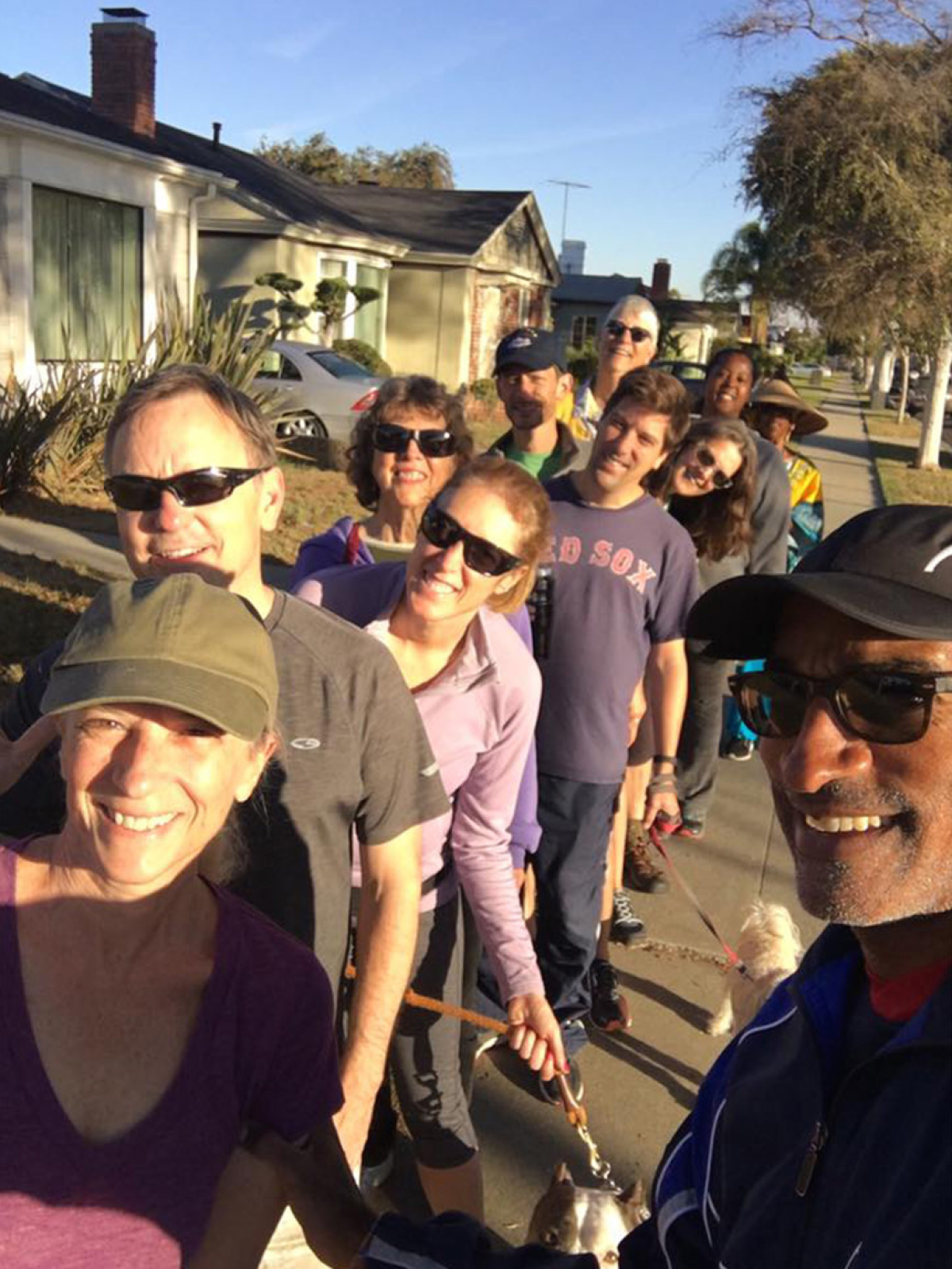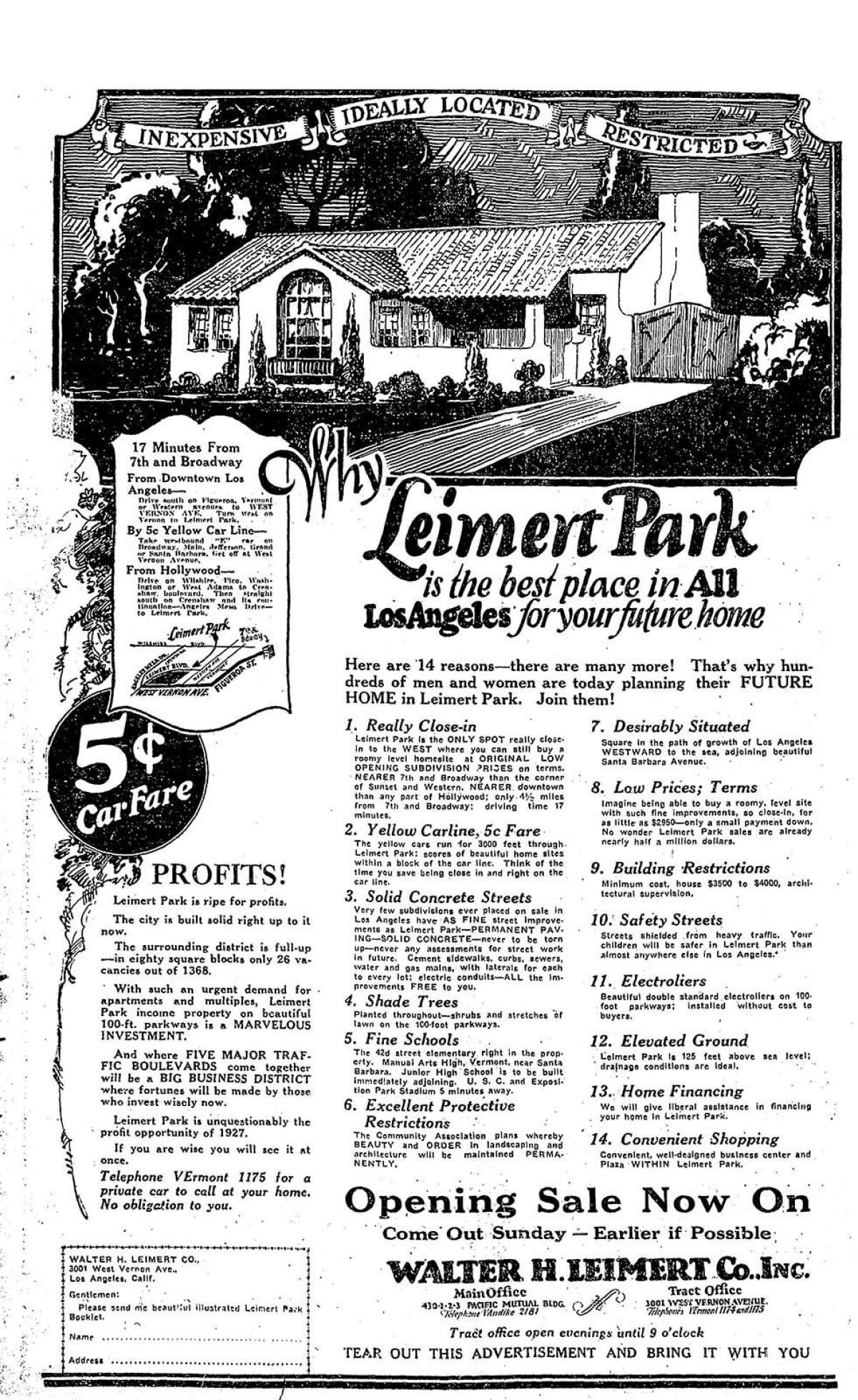What’s so wrong about white joggers in a black neighborhood?

It’s the selfie that set off a gentrification debate.
- Share via
The snapshot of joggers that has Leimert Park neighbors talking also has Los Angeles Times readers talking. The story drew more than 300 comments and over a hundred on Facebook.
The debate: When it comes to traditionally black neighborhoods, what’s wrong with white people being in the picture?

However impolitic and even offensive, that discussion has been percolating with more frequency and immediacy across many affluent parts of South Los Angeles, where the demographics have been shifting rapidly as the cost of housing has been shifting. Reporter Angel Jennings, who covers issues that affect residents in South Los Angeles, has been chronicling the undercurrents of tensions as affluent and middle-class black communities reflect on their growing appeal to white families in places such as View Park and now in Leimert Park.
Read all of the comments and the original story here
Actual neighbors on the user-verified online community NextDoor carefully – and sometimes not so carefully – navigate exchanges they might never have had in person. On Facebook, posts on personal pages and in groups see the passionate railings against gentrification of affluent black neighborhoods.
In fact, that’s where Jennings says she stumbled onto the controversy over what may seem to many a fairly innocuous photo: “The backlash over the photo embodied what I have been hearing recently in the community — that ‘white outsiders’ were driving up home prices and snatching up homes in an area that has long been a mecca for African American art and culture. Black residents fear that they were taking over, and reshaping the neighborhood.”
That fear has even manifested itself in a Change.org petition — with only modest support right now — seeking to “stop gentrification of black neighborhoods in Los Angeles.”
One supporter, Jennifer Jones, writes:
"The gentrification of the Black neighborhoods and comunities (sic) is a direct attack on Black culture. It displaces whole communities [because it's] the in thing. White communities are not in danger of this so they don't generally care about destroying anyone [else's] culture…."
Her comment continues, touching on a history of indigenous peoples losing their lands. Other supporters offer, perhaps, less strident reasons for signing the petition. Take Jw Rush:
"I want to simply preserve the rich Black culture that must not be washed away. I feel that all are welcomed but not to destroy what makes our communities great."
With real estate in Los Angeles at a premium, many of the properties in these quiet, well-kept black neighborhoods are considered a bargain. In some cases, properties are being marketed with their shifting demographics — becoming more white — as a selling point.
But many Times readers have asked: Why should black residents have any special claim to a neighborhood, to the exclusion of white buyers or renters? And how is this different from the sometimes hostile response of the area’s early white residents when confronted with black people wanting to move in?
Mark S.L. asks, “Shall we bring back segregation in order to maintain the blackness of this community? Arguing gentrification is just a modern way of arguing segregation. Trying to keep a community a certain ‘color,’ trying to keep certain groups of people out of a community, is segregation.”
“It's hard not to see this as racism," writes LATimes.com commenter JPsouthbay. “‘The white people are ruining the neighborhood.’ Change white to black and you can read this same story about 40 years ago.”
It’s true that Leimert Park wasn’t always a black neighborhood. Quite the contrary.
“Nothing in the early history of Leimert Park prefigured its rise as the heart of black Los Angeles.”
— KCET profile on the history of Leimert Park
Walter Leimert, who also developed the nearby Baldwin Hills community, created the Leimert Park development with shops and homes in 1927. But as a KCET piece about the neighborhood put it: “Nothing in the early history of Leimert Park prefigured its rise as the heart of black Los Angeles.”
Leimert Park blossomed into a brilliant multi-use community that encircled a small park that Leimert donated to Los Angeles. As with so many neighborhoods across Los Angeles, the buyers were primarily white. On top of restrictive covenants that limited where non-whites could live, Leimert Park boasted it had “excellent protective restrictions.”

As the KCET story noted, “more often than not, such restrictions resulted in segregated neighborhoods, whether or not that had been the intended effect.”
The area remained off-limits to black residents until the landmark 1948 Shelley v. Kraemer decision, when the U.S. Supreme Court declared racially restrictive covenants legally unenforceable. Soon after, affluent black residents began to stream in, and white residents flowed out. There was also briefly a significant influx of Japanese Americans to the neighborhood.
But the white flight had a less notable impact on the neighborhood as the black residents were relatively prosperous. Thus began the neighborhood’s transformation into a hub of black culture, affluence and influence. Among the noteworthy people who have lived in Leimert Park was Tom Bradley, Los Angeles’ first — and only — black mayor.
But the landscape of Los Angeles has changed as have the demographics of the city overall. And that has generated at times uncomfortable debates about gentrification, change and the places people call home.
Here’s a sampling of what readers had to say:
This article does seem to point out the racist tone, but that's because it isn't getting to the root of the problem, which is marginalization, and is related to the housing market and institutionalized racism or poverty. People can be pushed out by their tenant because they cannot afford the new prices, so you can understand the anger, although it may be misplaced...
It's also erroneous to blame the poor for being poor. It's often the fault of past history and the system which causes them to be poor; there are lasting effects….
– Moodie, commenting on latimes.com
...I wonder if these White people, who ventured into Leimert Park, are aware that African Americans can't just wonder into all White neighborhoods without experiencing the indignities and humiliation of being a suspect based on their skin color. Whites have never had to deal with such indignities. That is why their presence in Leimert Park does more harm than good.
– derekgrrrrr, commenting on latimes.com
The comments about the historical impact of racism on black household wealth, while tragic and true, are irrelevant to the rights of people to move into a neighborhood.
Diversity does not mean enshrining one group’s right to control the culture and character of a place. A neighborhood should be allowed to reflect its occupants.
[New white resident Carl] Pfirman's desire to understand and empathize is admirable and important, but he should also stand up for himself. He too was a victim, albeit on a smaller scale, from those hostile remarks, and that is unacceptable too….
...Any group can be guilty of intolerance and tribalism, not just whites, and some African American Angelenos clearly are in this article. Of course they’re reaping the profits from the gentrification of the neighborhood. Their anger at the presence of a minority in their neighborhood is extremely hypocritical. They are essentially saying, “there goes the neighborhood.”
– matt8s, commenting on latimes.com
Let's keep it real for a minute: Buried deep in our psyche as humans is the idea that racial segregation is somehow normal or the norm. When integration disturbs that norm, we give it a name like “blockbusting” or “gentrification.” Officially and outwardly as Americans, we mostly aspire to be an integrated society, just as long as that integration occurs somewhere other than our own community. This country has always been an experiment, and that experiment will ultimately fail if we don't get it together....
– MichaelScarborough, commenting on latimes.com
I moved into West Adams 16 years ago. When I moved to Los Angeles back in 1984, I was horrified to find that residential segregation was almost as prevalent as in the country I left, South Africa. My first job was given to me by an advertising agency that was predominantly African American, the partners knew I was from South Africa, and gave me a chance anyway. I sought out West Adams as a place to live, long before it was a gentrification destination, but precisely because it was diverse. I was overwhelmingly not judged by my country of origin, or by the color of my skin, and am still astonished that people saw me as an individual, rather than assuming that I was a racist because I came from South Africa. The generosity and inclusion that I've experienced from African Americans in my neighborhood is a source of joy to me: they suspended judgment and assumptions, and welcomed me to my new home. For anyone moving into a new neighborhood, I would suggest that you get involved, and make a contribution to improving life for everyone. Pick up trash, go to neighborhood council meetings, file MyLA311 service requests on your cellphone to have illegal dumping picked up, start a block club. Show up as a neighbor, and you'll be treated as a neighbor.
– kidogo, commenting on latimes.com
We’d love to keep the conversation going. Share your thoughts in the comment section below. Please note that our moderators will be previewing submissions before they are published to ensure the conversation remains respectful, even if direct, and on topic.
Chat me up on Twitter: @mmaltaisLA
Sign up for Essential California
The most important California stories and recommendations in your inbox every morning.
You may occasionally receive promotional content from the Los Angeles Times.








